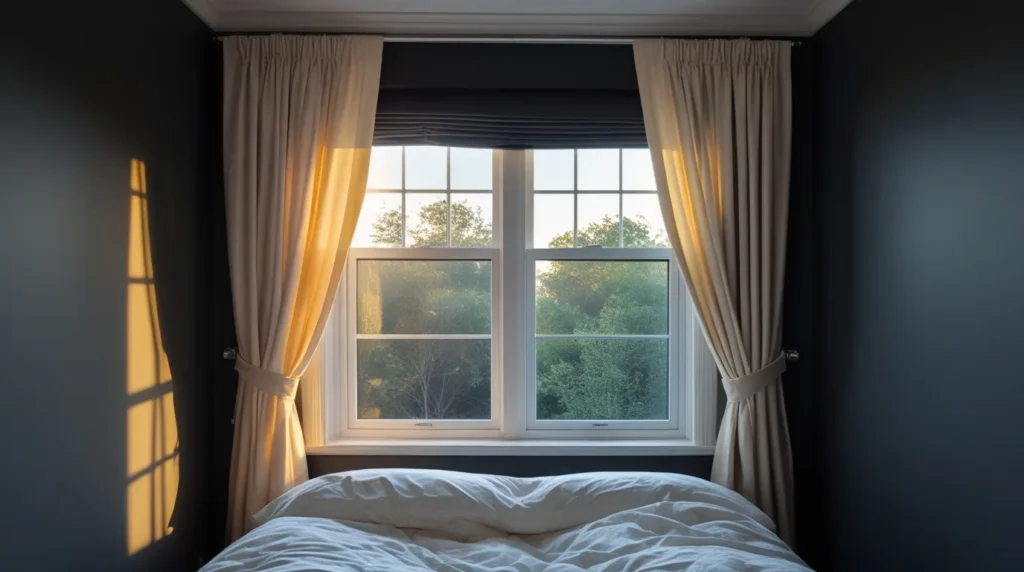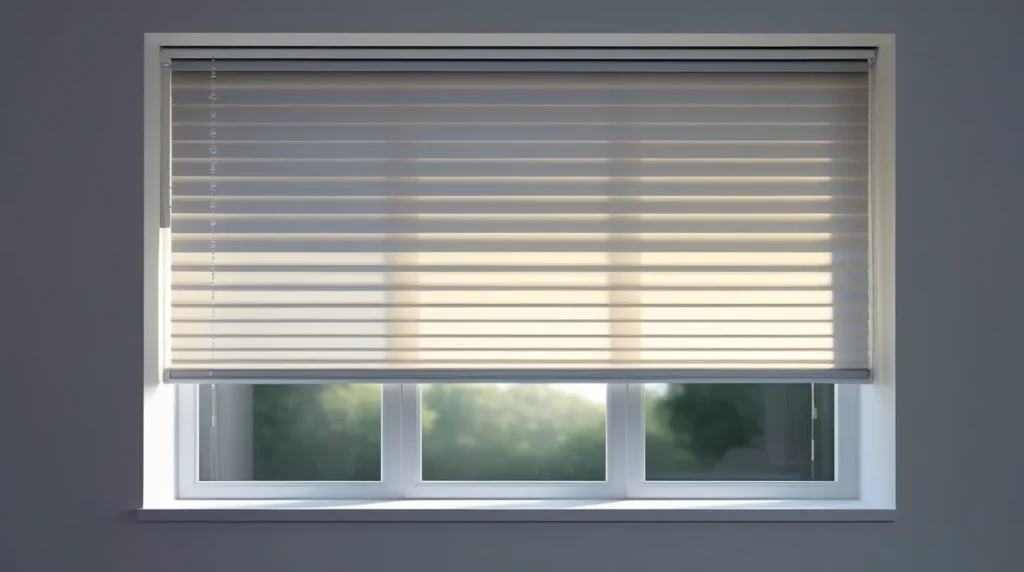The Impact of Light Gaps on Comfort and Privacy
Sunlight creeping through tiny gaps around your window coverings can be more than just a mild annoyance. It can wake you before dawn, make living rooms glare like an operating theater, and disrupt sleep by turning your bedroom into a sunrise stage. Even small spaces where light leaks can change how you feel in your home interfering with movie nights, shifting your mood, and raising room temperatures on hot days. To make your rooms truly dark and comfortable, you first need to understand these gaps and how they affect your daily life.
Spotting Light Gaps: Blinds Letting Light In & Curtain Gap Basics

A light gap is any opening where external light seeps around your blinds or curtains. These can appear at the sides, the top, or even between slats. Notice if you see bright lines on walls, floors, or ceilings around your window treatments. Side gaps often show when blinds aren’t snug against the window frame. Curtain gaps can form when panels don’t meet in the center or leave space near the rod. By spotting these common light gaps early, you can target the exact spots that need blocking.
Why You Need to Block Light in Southern California
In Southern California, the sun shines strong nearly all year. That blazing brightness can turn living rooms into sauna-like spaces and fade your furniture’s colors over time. Glare from side gaps will glare off screens and reflect off walls, making it hard to relax or focus. Learning how to stop light coming in side of blinds is especially valuable here: it keeps rooms cooler, protects your interiors, and helps you rest better, even when the sun rises at 5 am.
How to Stop Light Coming in Side of Blinds
To block side light, follow these steps:
- Lower your blinds completely and close them tightly.
- Slide each slat until it rests flush against the next to reduce slat gaps.
- Press the blind’s edge firmly against the window frame so no light sneaks through.
- Note exactly where daylight still peeks in (left or right side).
- Use this information to target your sealing materials in the next step.
- Sealing the Gap Between Window Frame and Blinds Sealing the Gap Between Window Frame and Blinds
Measure the gap width along the side where light leaks. Use a simple tape measure or ruler for precision. Then, choose a sealing material: adhesive-backed foam weather-stripping or thin rubber gasket tape both work well. Clean the window frame with a damp cloth, let it dry, and cut the weather-stripping to the measured length. Stick it firmly into place along the frame’s edge where the blind meets the wall. The soft foam compresses against the blind’s edge to block out sunlight from window sides.
DIY Light Gap Blocker: Side Tracks, Shades & Light Blocking Shade Ideas

For a more polished look, consider installing narrow side tracks on the inside of your window frame. These aluminum or plastic channels guide the blind’s edges and hold it tight. Many cellular shade side tracks kits include screws and brackets just follow the instructions. If you prefer no tools, attach L-shaped magnetic strips to the blind’s sides and frame. Then, layer a light blocking shade behind your existing blinds. Choose a blackout liner or roller shade that fits inside your frame: it presses against side tracks and stops all stray light gaps.
Blocking Light at the Top of Curtains & Using Blackout Blinds Behind Curtains
Light often slips in at the top of a curtain, especially if your rod sits above the window header. To block light at the top of curtains, attach a blackout header panel or a strip of dense fabric to the curtain’s top edge. You can sew or clip it in place. For extra darkness, hang blackout blinds behind curtains. Position the blinds about an inch above the window frame so they overlap the top gap. When you lower them, they press against the header panel and curtain rod to seal out morning sun.
Final Touches: Making Blinds Darker & Closing Curtain Side Gaps
To make window blinds darker and absorb any reflected light, paint the wall area immediately surrounding the blind with matte black paint. This reduces bounce-back light and creates an illusion of a deeper recess. Next, tackle curtain side gaps by adding magnetic or clip-on side flaps. These flaps attach to the curtain’s edge and wrap around the window frame, snapping into place to close any remaining openings.
Maintaining Your Light-Blocking Solutions
Once you’ve sealed gaps and installed blackout elements, keep them working their best by:
- Cleaning tracks and seals every month to prevent dust buildup.
- Inspecting weather-stripping for wear and replacing it annually.
- Checking curtain flaps and magnetic strips for alignment and reseating as needed.
Regular upkeep ensures that your blinds and curtains continue to block unwanted light effectively.
Conclusion
By following these simple steps closing slats properly, sealing side gaps with weather-stripping, installing side tracks or magnetic strips, and layering blackout solutions—you can truly learn how to stop light coming in side of blinds. Your rooms will stay darker, cooler, and more private, day or night.
Gallery Shutters Inc. brings expertise in custom shading solutions and top-quality materials to Southern California homes. Contact us to get a free consultation and find the perfect light-blocking design for your windows.
